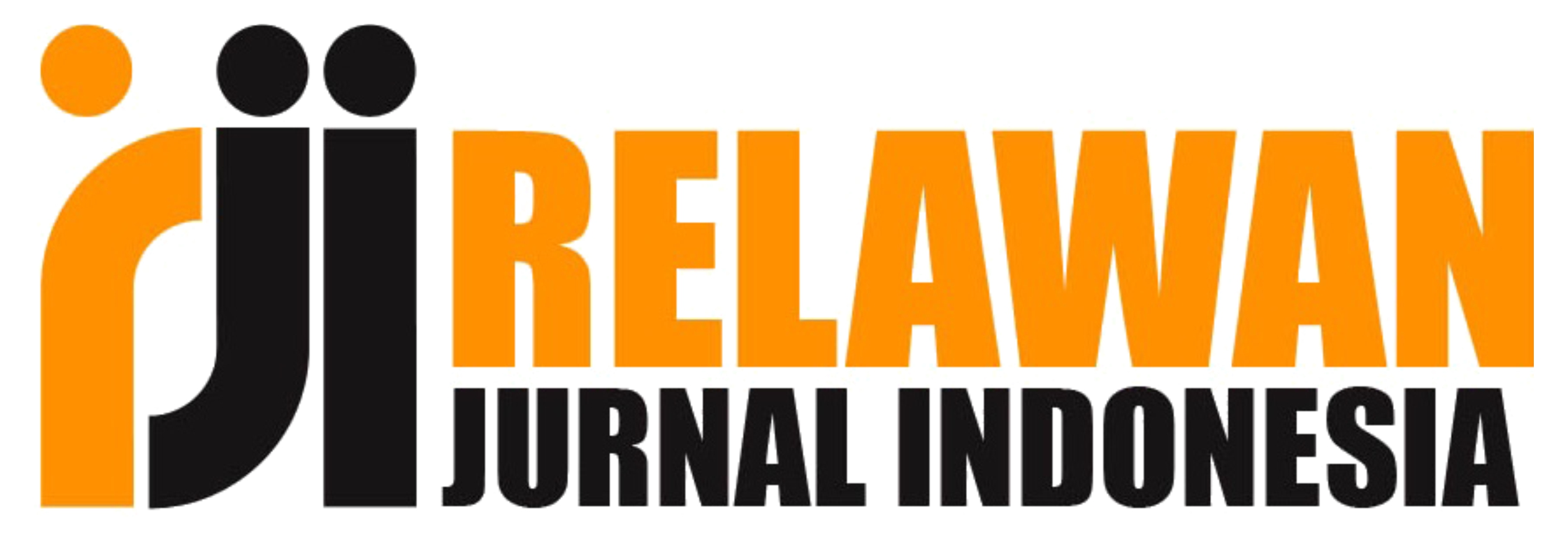Analisis Hasil Penerapan Model Kooperatif Tipe Jigsaw Dalam Pembelajaran PPKn Untuk Mengatasi Masalah Kecemasan Akademik
DOI:
https://doi.org/10.61476/4dc4dm35Keywords:
Academic Anxiety, The learning of Pancasila and Citizenship Education, The jigsaw cooperative learning model, Results and BarriersAbstract
This research discusses the paradigm shift in the teaching of Pancasila and Citizenship Education (PPKn) from a conventional teacher-centered and cognitive-focused approach to a student-oriented approach using the cooperative learning model known as the jigsaw method. The aim of this study is to investigate the outcomes and challenges that occurred after implementing the jigsaw cooperative model to address academic anxiety issues experienced by 12th-grade students. This research utilized a descriptive study with a qualitative approach conducted at SMA Negeri 6 Karawang in the academic year 2023/2024. The research findings indicate that the jigsaw cooperative learning model has proven to be successful and effective in addressing the academic anxiety issues faced by 12th-grade students. The results obtained showed improvements in student participation, comprehension of the material, social skills, emotional control, self-understanding, and rational thinking skills during the learning process. However, the research also identified some challenges in implementing the jigsaw cooperative model, such as disruptions from other groups and differences of opinion among students. In conclusion, the jigsaw cooperative learning model is considered an effective solution for addressing academic anxiety among students in the context of PPKn education. This shift in approach highlights the role of teachers in creating a student-centered learning environment, allowing students to develop holistically and overcome their learning challenges. This research makes a significant contribution to enhancing the quality of PPKn education in addressing the phenomenon of academic anxiety.
References
Andiwatir, A., Nay, F. A., & Talan, R. (2021). Model Pembelajaran SCL (Student Center Learning) pada Siswa Lamban Belajar (Slow Learner) Sekolah Menengah Pertama. PEMBELAJAR: Jurnal Ilmu Pendidikan, Keguruan, Dan Pembelajaran, 5(2), 117. https://doi.org/10.26858/pembelajar.v5i2.19595
Astjarjo Rini, W. (2019). Pembelajaran dengan Pendekatan Student Centered Learning (SCL) … | 85. Shanan Jurnal Pendidikan Agama Kristen, 3(1), 10–11. http://ejournal.uki.ac.id/index.php/shan/article/view/1575/1253
Banga, N., Mahavidyalaya, S., Halder, U. K., & Mishra, B. (2018). A Study On Academic Anxiety And Academic Achievement of Secondary Level School Students. 4(6), 1–5. https://www.researchgate.net/publication/263939820
Debi, I. (2018). Identifikasi Faktor Penyebab Kecemasan Akademik pada Siswa Kelas XI di SMA Negeri 3 Bantul. Jurnal Riset Mahasiswa Bimbingan Dan Konseling, 4(10), 629–635.
Gafur, A. (2011). Model, strategi, dan metode pembelajaran pendidikan kewarganegaraan (pkn) jenjang pendidikan: sma. 1–36.
Hooda, M., & Saini, A. (2017). Academic anxiety: An overview. Educational Quest: An Int. J. of Education and Applied Social Science, 8(3), 807–810. https://doi.org/10.5958/2230-7311.2017.00139.8
Japar, D. (2020). Media dan Teknologi Pembelajaran PPKn. In diakses pada tanggal 30 April 2021, pukul 09.00 WIB). https://www.google.co.id/books/edition/Media_dan_Teknologi_Pembelajaran/2uZeDwAAQBAJ?hl=id&gbpv=1&dq=pengertian+media&printsec=frontcover%0Ahttps://www.google.co.id/books/edition/Media_dan_Teknologi_Pembelajaran/2uZeDwAAQBAJ?hl=id&gbpv=1&dq=kelebihan+dan+
Johari, S. (2018). Teori Pembelajaran. In Psikologi Pendidikan (Vol. 1).
Johnson, D. H., & Johnson, R. T. (1998). Learning Together and Alone: Cooperative, Competitive, and Individualistic Learning (5th Edition). 272. http://www.amazon.com/Learning-Together-Alone-Cooperative-Individualistic/dp/0205287719
Kagan, S., & Stenlev, J. (2009). Cooperative learning : undervisning med samarbejdsstrukturer. https://www.kisii.gl/wp-content/uploads/2019/11/Kagan-Stenlev-Cooperative-Learning.pdf
Kewarganegaraan, P. D. A. N. (2020). Penulis: Dr. Sutoyo, M.Pd. Penerbit Unisri Press © 2020.
Krisna Anggraeni, & Devi Afriyuni Yonanda. (2018). Efektivitas Bahan Ajar Berbasis Kearifan Lokal Dalam Model Pembelajaran Teknik Jigsaw Terhadap Keterampilan Menulis Deskripsi. Visipena Journal, 9(2), 385–395. https://doi.org/10.46244/visipena.v9i2.467
Kurniawan, M. W., & Wuryandani, W. (2017). Pengaruh model pembelajaran berbasis masalah terhadap motivasi belajar dan hasil belajar PPKn. Jurnal Civics: Media Kajian Kewarganegaraan, 14(1), 10–22. https://doi.org/10.21831/civics.v14i1.14558
Maria Dimova, C., & Stirk, P. M. R. (2019). 済無No Title No Title No Title. 9–25.
Marsella, F. P. (2015). Uji Validitas Konstruk Pada Instrumen Academic Anxiety Dengan Metode Confirmatory Factor Analysis (CFA). Jp3I, 4(2), 1–11.
Mukrimaa, S. S., Nurdyansyah, Fahyuni, E. F., YULIA CITRA, A., Schulz, N. D., غسان, د., Taniredja, T., Faridli, E. M., & Harmianto, S. (2016). No 主観的健康感を中心とした在宅高齢者における 健康関連指標に関する共分散構造分析Title. Jurnal Penelitian Pendidikan Guru Sekolah Dasar, 6(August), 128.
Pate, A. N., Neely, S., Malcom, D. R., Daugherty, K. K., Zagar, M., & Medina, M. S. (2021). Multisite study assessing the effect of cognitive test anxiety on academic and standardized test performance. American Journal of Pharmaceutical Education, 85(1), 43–54. https://doi.org/10.5688/ajpe8041
Republik Indonesia, P. (2005). UU 14-2005 Guru dan Dosen.pdf (p. 17).
Rosyidah, U. (2016). Pengaruh Model Pembelajaran Kooperatif Tipe Jigsaw terhadap Hasil Belajar Matematika Siswa Kelas VIII SMP Negeri 6 Metro. SAP (Susunan Artikel Pendidikan), 1(2), 115–124. https://doi.org/10.30998/sap.v1i2.1018
Satriaman, K. T., Pujani, N. M., & Sarini, P. (2019). Implementasi Pendekatan Student Centered Learning Dalam Pembelajaran Ipa Dan Relevansinya Dengan Hasil Belajar Siswa Kelas Viii Smp Negeri 4 Singaraja. Jurnal Pendidikan Dan Pembelajaran Sains Indonesia (JPPSI), 1(1), 12. https://doi.org/10.23887/jppsi.v1i1.21912
Segundo-Marcos, R., Carrillo, A. M., Fernández, V. L., & Daza González, M. T. (2023). Age-related changes in creative thinking during late childhood: The contribution of cooperative learning. Thinking Skills and Creativity, 49(May). https://doi.org/10.1016/j.tsc.2023.101331
Septu, D., Ibrahim, M., Ramdhani, S., & Mukti, H. (2022). Peran Guru Dalam Membentuk Karakter Siswa Melalui Pembelajaran Kooperatif. Jurnal Didika : Wahana Ilmiah Pendidikan Dasar, 8(1), 102–113. https://doi.org/10.29408/didika.v8i1.5834
Slavin, R. E. (1980). Cooperative Learning. Review of Educational Research, 50(2), 315–342. https://doi.org/10.3102/00346543050002315
Suparlan, S. (2019). Teori Konstruktivisme dalam Pembelajaran. Islamika, 1(2), 79–88. https://doi.org/10.36088/islamika.v1i2.208
Youniss, J. (2011). Civic education: What schools can do to encourage civic identity and action. Applied Developmental Science, 15(2), 98–103. https://doi.org/10.1080/10888691.2011.560814
Published
Issue
Section
License
Copyright (c) 2023 Feni Tri Rahayu, Fitri Silvia Sofyan, Yudi Firmansyah (Author)

This work is licensed under a Creative Commons Attribution-ShareAlike 4.0 International License.












